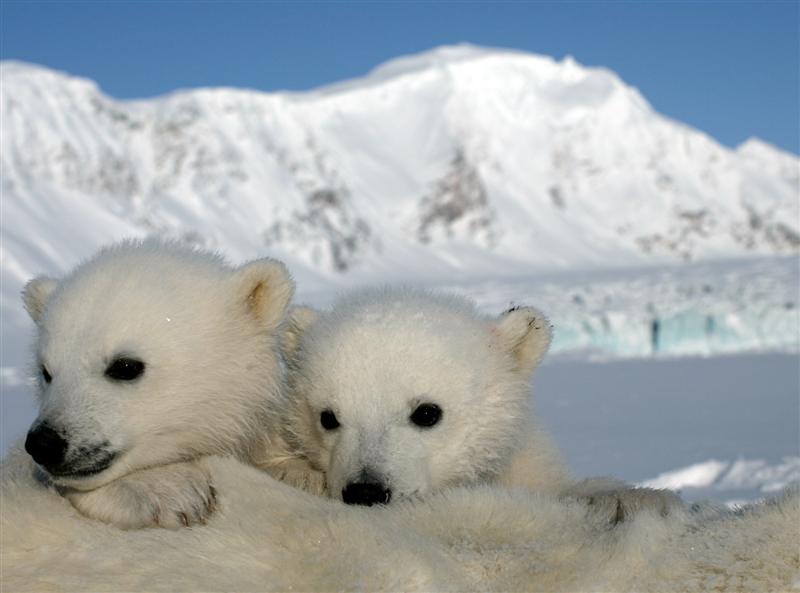Jon Aars is a researcher with the Norwegian Polar Institute, Norway’s main institution for research, environmental monitoring and mapping of the polar regions. With the support of WWF, Aars studies polar bear populations on the Norwegian island of Svalbard. Read all of his field notes from a Spring 2013 research expedition, and follow the bears on our Polar Bear Tracker.

The two sons of a female we captured today, back in 2007, in the same area. One of the two cubs of the pictures was killed in self defence when it tried to get into a cabin with two persons a few days ago. Svalbard, Norway, April 2013 © Jon Aars / NPI
Yesterday we entered the Norwegian coast guard ship KV Svalbard, our home for the next couple of weeks. It is a great ship, and with a highly service-minded crew. Besides patrolling the areas around Svalbard to check that fishing boats follow the rules, they frequently help teams doing research in the area.
We planned to sail north, until we checked the weather forecast – snow and wind in that part of the archipelago. So we sailed south during the night, and surveyed Hornsund, the most southern fjord on the Spitsbergen west coast, today.
In the inner part, in front of the glaciers, we encountered tracks from two different adult females, with one and two small cubs respectively. However, we did not find the bears. But after some more searching, we found a single adult female, a twelve year old that was marked in Hornsund as a cub in 2001. We captured her in 2007 with two sons, her first litter. One of them was killed in self defense in a cabin a bit further west some days ago, when he tried to get into a cabin with two people. The female got a collar, and we located an adult male in the same area after a few minutes of flying. He was a large animal in his prime age, about 10 years old.
